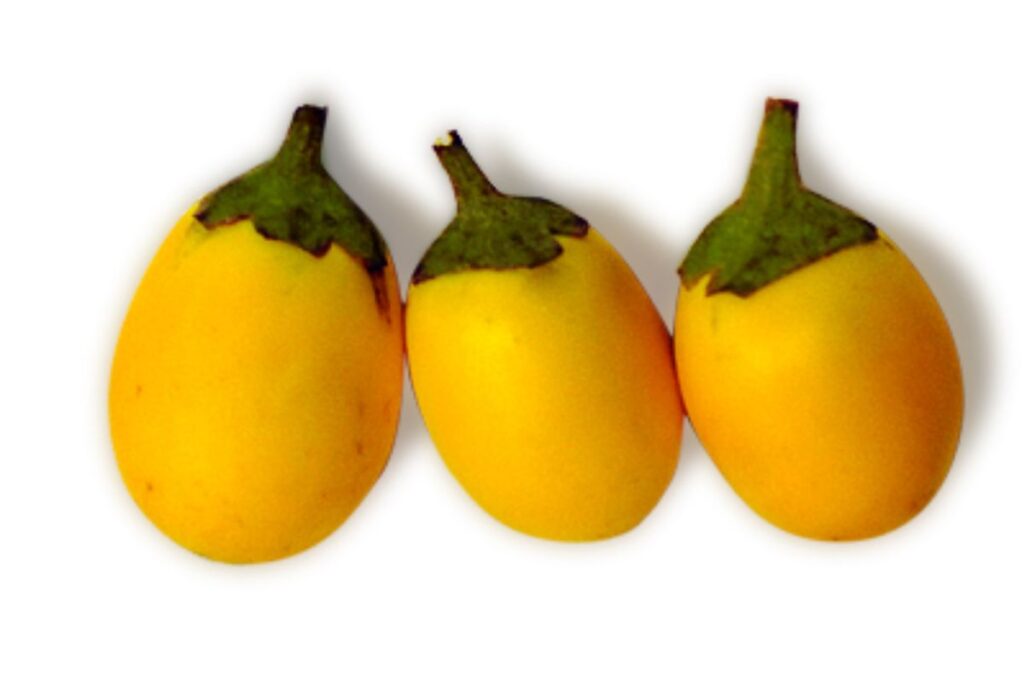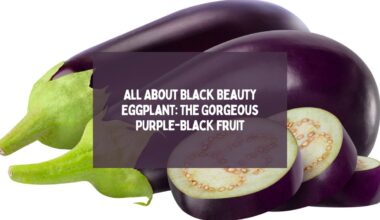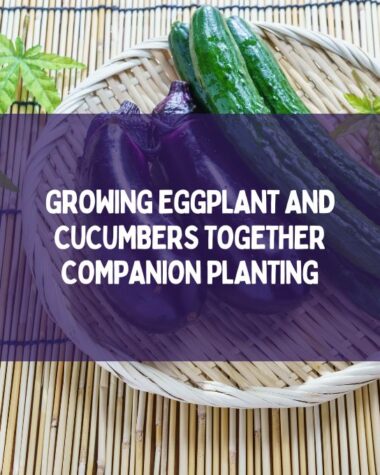Yellow eggplant, also known as Turkish eggplant or Aubergine, is a unique and flavorful vegetable that is not as widely known as its purple counterpart. This vibrant yellow vegetable is rich in nutrients, low in calories, and versatile in cooking.
In this article, we will explore the benefits, culinary uses, and potential drawbacks of yellow eggplant.
What is Yellow Eggplant?

Yellow eggplant belongs to the same family as the more familiar purple eggplant, but it has a distinct appearance and taste. Yellow eggplant has a round or oblong shape, and its skin is smooth and glossy.
| Information | Description |
| Description/Taste | Yellow eggplants are small, round or oval, averaging 2-5 centimeters in diameter. |
| Seasons/Availability | Yellow eggplants are available year-round. |
| Variety | Yellow eggplants are a rare Thai heirloom variety |
| Nutritional Value | Yellow eggplants contain dietary fiber, calcium, phosphorous, potassium, and manganese. They also contain some vitamins A and C. |
The flesh is pale yellow, with a slightly sweet taste that is milder than the bitterness of purple eggplants. Yellow eggplant is widely grown in Turkey, the Middle East, and India, but it is also available in some specialty stores in the United States and Europe.
Why Yellow Eggplant is a Hidden Gem?
Yellow eggplants are a hidden gem for a number of reasons. For one thing, they’re visually striking, with a bright, cheerful color that makes them stand out on a plate. But their appeal goes beyond just their appearance.
Yellow eggplants have a delicate, slightly sweet flavor that’s more subtle than the earthy, slightly bitter taste of traditional eggplants. This makes them a versatile ingredient that can be used in a wide range of dishes.
What is the Nutritional Value of Yellow Eggplant?
Yellow eggplant is a low-calorie vegetable that is high in fiber, vitamins, and minerals. One cup of cooked yellow eggplant contains only 35 calories, but it provides significant amounts of vitamin C, vitamin K, vitamin B6, folate, potassium, and magnesium.
Yellow eggplant is also a good source of antioxidants, such as anthocyanins and chlorogenic acid, which can help to reduce inflammation and protect against chronic diseases.
Related Reading:
- How To Grow Aubergine From Seed?
- A Beginner’s Guide to Gardening with Chinese Eggplant
- Top 5 Eggplant Growing Problems (and How to Fix Them)
- Growing Eggplant And Cucumbers Together Companion Planting
- All About Black Beauty Eggplant: The Gorgeous Purple-Black Fruit
How to Grow Yellow Eggplants?

Yellow eggplants are relatively easy to grow and care for, even for beginners. Here’s how to get started:
1. Choose a Good Location
Yellow eggplants thrive in warm, sunny locations, so choose a spot in your garden that gets at least six hours of direct sunlight per day. They also need well-drained soil that is rich in organic matter. Avoid planting them in areas that are prone to flooding or waterlogging.
2. Plant the Seeds
Plant the seeds in spring or early summer, after the last frost. You can start the seeds indoors six to eight weeks before the last frost date, or you can sow them directly in the ground. Plant the seeds ¼ inch deep and 2-3 inches apart. Cover the seeds with soil and water them well.
3. Water and Fertilize
Keep the soil moist but not waterlogged, and water the plants deeply once a week. Yellow eggplants are heavy feeders, so fertilize them with a balanced fertilizer every two to three weeks.
4. Control Pests and Diseases
Yellow eggplants are susceptible to pests and diseases such as flea beetles, aphids, and verticillium wilt. Keep an eye on your plants and use organic pest control methods such as handpicking, neem oil, or insecticidal soap.
5. Harvest the Fruit
Yellow eggplants are ready to harvest when they are fully mature and have a shiny, smooth skin. Use a sharp knife or pruner to cut the fruit from the plant, leaving a short stem attached. Do not wait too long to harvest, as overripe eggplants can become bitter.
Culinary Uses of Yellow Eggplant
Yellow eggplant is a versatile vegetable that can be used in many different dishes, from salads to stews to dips. Here are some ideas for incorporating yellow eggplant into your cooking:
Roasted Yellow Eggplant
- Preheat the oven to 400 degrees F.
- Slice the yellow eggplant into 1-inch rounds.
- Brush the slices with olive oil and sprinkle with salt and pepper.
- Roast the eggplant slices for 20-25 minutes, until they are tender and golden brown.
- Serve the roasted eggplant as a side dish or use it as a topping for pizza or sandwiches.
Yellow Eggplant Curry
- Heat 2 tablespoons of oil in a large pot over medium heat.
- Add 1 chopped onion, 2 minced garlic cloves, and 1 teaspoon of grated ginger, and sauté for 5 minutes.
- Add 2 diced yellow eggplants, 1 diced zucchini, 1 diced red bell pepper, and 1 tablespoon of curry powder, and cook for another 5 minutes.
- Pour in 1 can of coconut milk and 1 cup of vegetable broth, and bring the mixture to a boil.
- Reduce the heat to low and simmer the curry for 15-20 minutes, until the vegetables are tender.
- Serve the curry with rice or naan bread.
Yellow Eggplant Dip
- Preheat the oven to 350 degrees F.
- Cut 2 yellow eggplants in half and place them on a baking sheet.
- Roast the eggplants for 30-40 minutes, until they are soft and tender.
- Scoop out the flesh of the eggplants and place it in a food processor.
- Add 1/4 cup of tahini, 2 minced garlic cloves, 1/4 cup of lemon juice, and salt to taste, and pulse until the mixture is smooth.
- Serve the dip with pita bread or crackers.
Potential Drawbacks of Yellow Eggplant
While yellow eggplant is generally safe and healthy to eat, some people may experience digestive discomfort or allergic reactions to eggplants in general. Yellow eggplant contains solanine, a compound that can cause nausea, vomiting, and diarrhea in some people if consumed in large quantities.
Additionally, people with a history of kidney stones or gallbladder problems should limit their consumption of eggplants due to their oxalate content, which can contribute to the formation of stones.
Related Reading:
- The Fascinating Story of Purple Tomatoes: Genetics and Cultivation
- How To Grow Pumpkins In Molds?
- Everything You Need to Know About Baby Cucumbers
- Why Are My Zucchini Plant Wilting?
- What Is the Best Time to Plant Carrots?
Conclusion
Yellow eggplant is a nutritious and flavorful vegetable that deserves more attention in the kitchen. It is a great source of fiber, vitamins, and minerals, and it can be used in a variety of dishes. While there are potential drawbacks to consuming eggplants, they are generally safe and healthy for most people.
If you are looking to try something new in the kitchen, give yellow eggplant a chance and see what delicious creations you can come up with!







